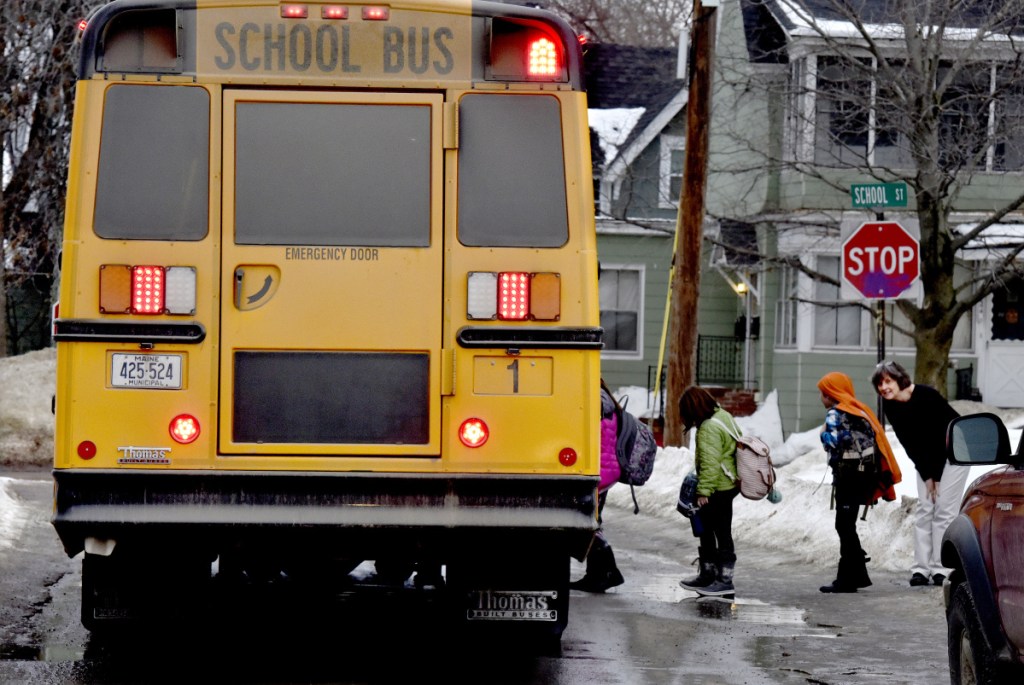One in 5 girls and 1 in 20 boys are survivors of child sexual abuse, and the reason is silence.
Adults often don’t know how to recognize the subtle signs of abuse, and wouldn’t know how to confront it if they did. Young children don’t often know how to deal with complex feelings, or how to articulate when an adult is making them uncomfortable. Under this fog of secrecy, abusers take cover.
Maine this year is taking an important step in shining a light in that dark place. Under a 2015 law sponsored by Sen. Joyce Maker, R- Calais, each school district is now required to have a written policy on child sexual abuse prevention education and response for grades pre-K through 5. A model policy and implementation guide from the Department of Education and the Maine Coalition Against Sexual Assault has been disseminated, and administrators and other school personnel will over the next year receive training on how to put the programs to work.
THE TOOLS THEY NEED
Through the new initiative, more young students will learn how about to be comfortable with and protective of their own bodies, and how to define abuse, using age-appropriate terms and concepts. Administrators, teachers and other school personnel will learn how to recognize child sexual abuse and, importantly, how to respond in a manner that is reassuring and soothing to a child dealing with emotions they don’t entirely understand.
Parents, of course, also play an important role in preventing and identifying abuse, and there are tools for them at childrenssafetypartnership.org, alongside the materials being used by schools. Parents should become familiar with these materials, so they can answer their child’s questions in a way consistent with the best practices they are being taught at school.
But the work in schools is important. The vast majority of abusers are known to the children they abuse, and most of those are close family members. It is often difficult for people to believe that abuse is happening within their own family, and are uncomfortable making such accusations, particularly when abusers are so good at silencing their victims.
And schools is where students spend a lot of their time, where they interact with their peers and other adults in a way that might uncover that something is wrong. That is how abuse often reveals itself, not with an outright disclosure but with faint signs.
THE COST OF NOT ACTING
When those signs emerge, people need to be able to recognize them. When they are not able to, children are hurt for a lifetime — abuse survivors are more likely to suffer from clinical depression, anxiety and post-traumatic stress disorder. They are more likely to fall into substance abuse and self-harm. The cost of not knowing what to do is immense.
Testifying in support of the bill that would become the 2015 law, one abuse survivor said, “When I was raped and sexually abused as a child I did not know what to do. My body seemed to belong to the men that used and abused it. [That] was the message I learned, because I was getting no other message.”
Another testifier whose abuse started young said she was just waiting for an adult to recognize her pain: “I wanted so badly for someone to ask me the right questions.”
One mother only found out about her daughter’s seven years of abuse when she read her journal. “If I had had the education at school as an employee, I might have picked up on the signs or heard her silent cries for help,” she testified. “Maybe she could have found the words through education and school to have opened up to myself or another adult or friends.”
For them, there is no way to go back and erase the pain. But by acting on their words, we can keep it from happening to someone else.
Copy the Story LinkSend questions/comments to the editors.



Success. Please wait for the page to reload. If the page does not reload within 5 seconds, please refresh the page.
Enter your email and password to access comments.
Hi, to comment on stories you must . This profile is in addition to your subscription and website login.
Already have a commenting profile? .
Invalid username/password.
Please check your email to confirm and complete your registration.
Only subscribers are eligible to post comments. Please subscribe or login first for digital access. Here’s why.
Use the form below to reset your password. When you've submitted your account email, we will send an email with a reset code.